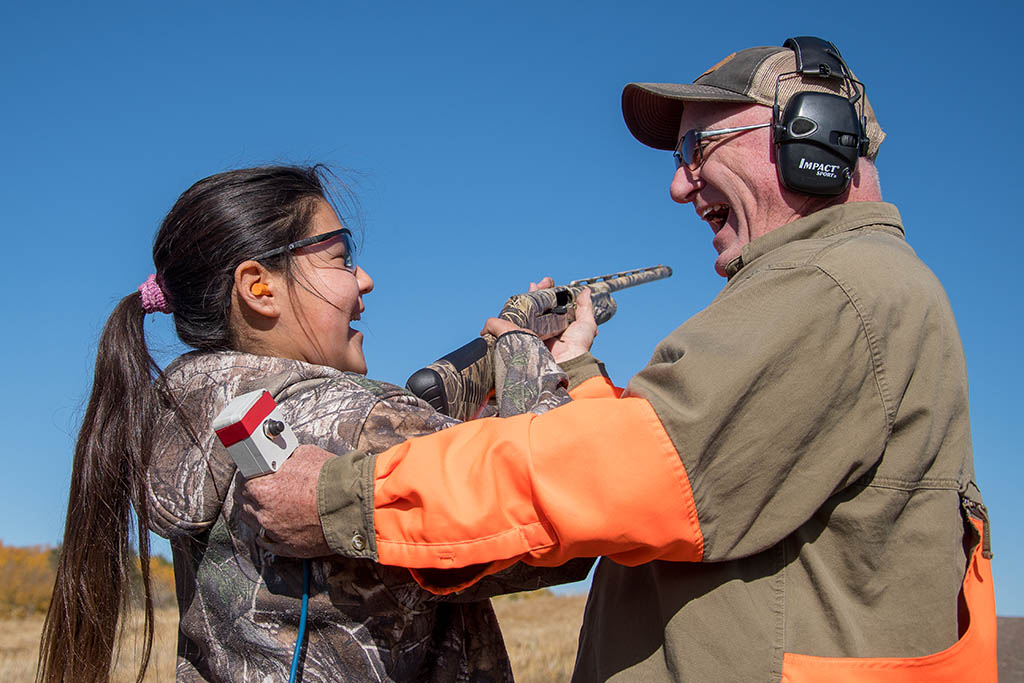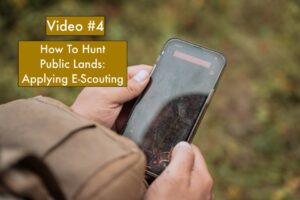Article by Sam Jacobs

Fewer and fewer young hunters are venturing out into the majestic Manitoban woods due to major demographic shifts, urbanization, and the constant allure of electronic distractions. If the great Canadian tradition of hunting and fishing is to survive, it must be the new generation who will carry it into the future.
I know that sounds like a tall order, as a parent myself I understand how difficult it is to pry them away from their tablets and phones once they get into them. However, it is not insurmountable if you follow the steps we outline below, to pry your kids away from the latest TikTok video and into the woods instead.
Emphasize Firearms Safety
When it comes to youth hunting, firearms safety is paramount to keeping everyone safe and having an enjoyable time in the field. Any youth interested in hunting, will need to first take an Hunter Education course, Manitoba offers online and in-person courses. As a parent or mentor, it is also your duty to teach any youth hunter the importance of firearm safety in the woods.
This task begins at the gun range, as firearm safety comes with familiarity. Children should handle any firearm they take into the woods multiple times before heading to deer camp. Besides basic marksmanship techniques, your child needs to know how to load and unload the firearm, check the chamber, and operate the safety.
Getting your child involved in youth shooting programs is a great way to build their confidence using a firearm and can teach them valuable shooting skills. It’s also really fun and a great way to keep them interested in shooting.
Strategies for Teaching Children to Shoot
Teaching a child how to shoot properly and safely is an extremely rewarding process. It allows you, as the parent or mentor, to spend quality time with the child and build lifelong memories before heading into the woods.
When introducing a child to firearms, the best thing you can do is start them off with a 22 Long Rifle (LR) as it has virtually no recoil and allows the child to focus completely on developing proper marksmanship skills. If you are dead set on shotgun hunting, then a .410 gauge is the best option to start training with before you upgrade them to a 20 or 12 gauge.
When training children with firearms, the important thing to emphasize is fun, as children are more likely to want to shoot more if they enjoy it. Try integrating reactive targets that are fun to shoot, like spinning targets, steel, or shoot-and-see paper targets. This gives the child immediate positive feedback when the score a hit.
Make sure to heap plenty of praise onto your child for going shooting and make note of all the progress they are making.
Don’t expect your child to be the next incarnation of Annie Oakley and produce one inch groupings on their first trip to the range. Keep your expectations in check and use positive reinforcement to emphasize proper trigger control and site alignment and your child will be punching out the bullseye in no time!
Teach Hunting Safety and Ethics
When you’re out in the woods, your child will look to you as an example of how to behave. While in the woods, here are some basics you should cover with your child:
- Always follow provincial and local laws as well as licensing requirements
- If hunting on private land, ask permission
- Leave the woods as you found them and teach the importance of conservation
- Teach your child how to minimize your noise
- Never shoot in the direction of buildings, roads, or other people
- Explain why you may sometimes pass on taking a shot, if you are not sure the it would produce an ethical kill
By instilling these values in youth hunters, we can help raise the next generation with the ethics and morals that make hunting an amazing sport.
Have a Plan
Children love structure, they thrive in environments when they know what to expect and what is going to happen. Therefore, to get your child excited about hunting, one thing you can do is involve them in the planning and preparation for the hunt.
Here are some good practices when preparing to hit the woods:
- Keep it local – Don’t plan on going too deep into the woods on your first few trips, keep it close and look for spots with a lot of animal signs.
- Don’t be afraid to move – Most kids don’t have the patience to sit still in one spot for 6+ hours until they’re older. If your spot is dead quiet, don’t be afraid to move to keep things interesting.
- Prepare the night before – Try to get all your gear lined up the night before so there is less confusion in the morning when your child (or you) will likely be groggy and unfocused.
- Pack Snacks – A hungry child is a cranky child. Pack extra snacks to keep them satiated and focused on the hunt and not their stomach.
- Use a hunting blind – A blind is more comfortable for a child as they can move around with you having to worry about spooking the animals around you. It can save a lot of frustration and tears and make for a more enjoyable time.
- Know when to call it – Although you and I can sit in the woods all day, youth hunters will not have the patience for this. Plan for 3 or 4 hours max in the woods the first few times or less if it’s cold.
Preparing the Next Generation of Youth Hunters
Passing on the sport of hunting to the next generation is a sacred duty that has been passed down through the ages. By following the simple steps outlined above, you can help make hunting, fishing, and wildlife conservation a fun and integral part of your child’s life.
Hunting with your child prepares them for life’s greatest challenges through a variety of lessons learned while spending time together in the woods. It’s a type of quality time that has no equal, one that they will remember for a lifetime.

